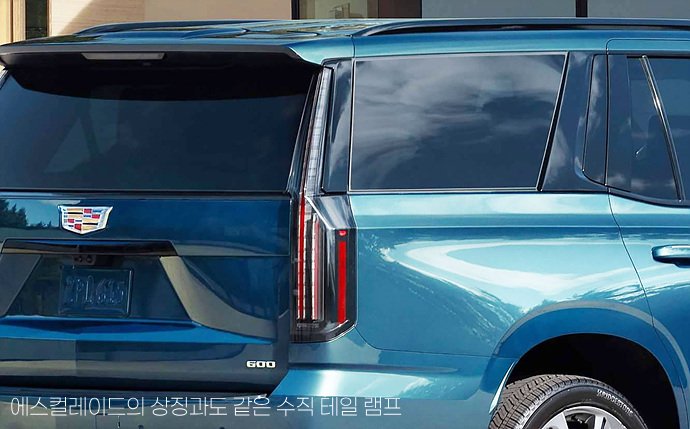
The recently facelifted fifth-generation Cadillac Escalade was first introduced in the United States in 2020. This is the model’s first update in five years—marking a new chapter in the evolution of this 27-year-old luxury SUV icon.

The facelifted Escalade was officially unveiled in the U.S. in July 2024, with sales beginning in early 2025. Since its first-generation release in 1998, the Escalade has steadily evolved into a symbol of American luxury SUVs—offering both imposing scale and a distinct visual identity.

The refreshed design features vertical headlights reminiscent of Cadillac’s recent EVs, along with a shield-like Cadillac emblem. This marks a significant departure from the previous high-mounted, horizontal headlight layout.
In the facelifted model, slim horizontal daytime running lights remain, but the main headlights now sit vertically—mirroring the prior vertical DRL setup. This layout feels more in line with Cadillac’s signature design language.

When comparing the facelifted Escalade directly with its predecessor, the visual impact is surprisingly strong, despite most changes being centered around the front bumper and lighting elements. Without a side-by-side view, however, the differences may seem less dramatic. The absence of horizontal headlights helps the radiator grille appear more dominant.

The side profile remains largely intact, with one exception: the chrome garnish on the C-pillar has been widened for a more substantial visual effect.

Wheel options now start at 22 inches, scaling up to 24 inches—possibly the largest available on any production vehicle. Once considered a conceptual size confined to design renderings, 24-inch wheels are now a production reality.

To put this in context, the 1987 Kia Pride rode on 12-inch wheels, and even American full-size SUVs from that era rarely exceeded 15 inches.

While 24-inch wheels may compromise ride comfort, they undeniably enhance stability and visual presence.

The Escalade retains one of its most recognizable features: the vertical tail lamps extending over the D-pillar, a design cue that allows the vehicle to be identified from a distance, reinforcing its unique road presence.

The Escalade retains one of its most recognizable features: the vertical tail lamps extending over the D-pillar, a design cue that allows the vehicle to be identified from a distance, reinforcing its unique road presence.

Inside, however, the facelift brings substantial change. The instrument panel now features a wide, seamless panoramic display that spans from the driver’s side to the passenger’s. A horizontal wooden panel below the displays evokes classic American luxury, resembling a built-in shelf.

The seating layout, including headrest-mounted speakers for front passengers, remains unchanged, emphasizing a continued focus on in-cabin experience and comfort.

While traditional automobiles prioritized driving dynamics, today’s mobility trends are shifting toward in-transit experience and spatial value. In that sense, full-size American SUVs may have been ahead of their time. The Escalade, in particular, embodies this ethos through its generous scale and interior luxury.
























